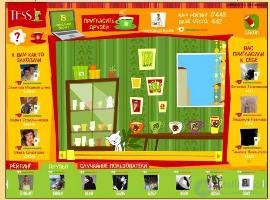Lecture
The concept of " Social Web " ( Social Web ) is used to describe how the socialization of users and their interaction with each other through the WWW . The basis for the association of users are a variety of common interests.
The term " Social Web " can be used to express two concepts.
One can consider as a community a multitude of people connected and interacting with each other through content in the mode of dialogue and joint actions through the Internet.
Being aimed at promoting interaction between people, social software for the Web operates with the following social attributes :
Social software is a wide range of software systems that allow users to interact and share data. This method of computer-mediated interaction has become popular with the emergence of social sites such as MySpace, Facebook, Odnoklassniki, Flickr and YouTube media sites, and eBay commercial sites.
Many of these applications have common characteristics such as: open APIs, service-oriented design, the ability to remotely place data and media files. Such applications are commonly referred to as Web 2.0 systems.
Inside the social software can be divided into two groups of software tools: communication and interactive .
The following are examples of software systems that are related to social software:
Folksonomy ( folksonomy ) - the practice and methodology of joint categorization of content (links, photos, video clips, etc.) by means of randomly selected tags (tags). It is based on the spontaneous collaboration of a group of people with the goal of organizing content and is completely different from traditional formal classification methods based on index terms . As a rule, this phenomenon occurs only in non-hierarchical communities, for example, on publicly accessible websites. Since participants in the folksonomy of content are usually its main consumers, the use of the folxonomy methodology leads to results that more accurately reflect the joint conceptual content model of the whole group.
The main problems of folksonomy, leading to unreliability and inconsistency of results, are:
Folxonomy can be considered as one of the key elements in the development of the Semantic Web network , within which all web pages contain machine-oriented metadata describing the contents of the pages. These metadata should significantly improve the accuracy of search engines. However, in order to avoid the difficulties caused by the unreliability and inconsistency in the work of large communities of page authors, they are encouraged to use metadata standards, such as the Dublin Core .
The Semantic Web is part of a global concept for the development of the Internet, the goal of which is to realize the possibility of computer processing of information available on the WWW. The main focus of this concept is on working with metadata that uniquely characterize the properties and content of WWW resources, instead of the textual analysis of documents currently used.
The term was coined by Tim Berners-Lee in May 2001.
Widespread use of the semantic web
The concept of the semantic web was adopted and promoted by the W3C. For its implementation it is supposed to create a network of documents containing metadata about WWW resources, and existing in parallel with them. While the resources themselves are intended for human perception, metadata are used by machines (search robots and other intelligent agents) to obtain unambiguous information about the properties of these resources using inference engines.
The technical part of the semantic web is a family of standards for description languages, including XML , XML Schema , RDF , RDF Schema , OWL , etc. The need to describe metadata somehow leads to duplication of information. Each document should be created in two copies: marked for reading by people, as well as in a machine-oriented format.
An ontology is an attempt to comprehensively and thoroughly formalize a certain area of knowledge using a conceptual scheme. Typically, such a scheme consists of a hierarchical data structure containing all the relevant classes of objects, their relationships and rules (theorems, constraints) adopted in this area.
Modern ontologies usually consist of instances , concepts , attributes, and relationships .
To describe the ontologies of the Web, a special language was developed - OWL (Web Ontology Language), built on the basis of XML. OWL can be used to describe classes and the relationships between them. At the core of the language is the representation of reality in the object-property data model. The language is applicable not only to the description of web pages, but also to any objects of reality and is considered as one of the fundamental technologies necessary for building the Semantic Web.
While a set of resources and their metadata can be considered a static part of the semantic web , its dynamic part is represented by semantic web services - complete elements of program logic with uniquely described semantics, accessible via the Web and suitable for search, composition and execution.
Technically, a semantic web service differs from a regular web service by the presence of not only the interface description (usually in WSDL ) in terms of the types of data transmitted to the service, the values returned and errors generated, but also the semantic description of all its characteristics.
The potential benefit of using semantic web services is the ability to automatically search (and also composition) software agents suitable services to solve the tasks.
Nevertheless, the complexity of this task in its general formulation so far allows to achieve some positive results only in highly specialized industries that clearly benefit from the introduction of service-oriented architecture, for example, in the integration of enterprise applications.
To date, all popular social networks, such as Facebook, Vkontakte, Odnoklassniki, offer the placement of custom applications. They interact with the data of the user who added the application to his page, namely, access to the user's basic information: a list of his friends, photos, hobbies, etc. The application is an additional part for the social network, expanding its capabilities.
According to the experts of New Media Age, the longer the duration of the game / contact with the branded content, the higher the user's desire to purchase the product. Compared to standard advertising formats, a branded game allows you to increase brand awareness 3 times in the first 90 seconds of the game. ”
application type:
Currently, the most popular types of social networking applications are:
The configuration of branded applications depends on the goals, objectives and wishes of the Client. A distinctive feature of applications in social networks is their uniqueness. Each project is carried out by individual order, in fact, being an exclusive, piece product. With the help of a wide range of tools (graphics, animation, music) in such projects you can embody a variety of ideas from a simple gaming application to a viral game. In addition, such applications have a high degree of user involvement, as well as a variety of mechanisms to attract additional audiences (share the application with friends to earn extra points, totems, etc.). At the time of involvement in the application, the user experiences positive emotions, thereby establishing associations with the brand. In addition, the ability to integrate actions from reality into the gameplay (for example, totem purchase) allows you to motivate users to take specific actions.
For the Client, such projects become valuable due to obtaining complete information about the user who installed the application or game on his page, as well as his friends.
Recently, online stores in social networks have become widespread. Now the buyer does not need to go to the company's website, he can make purchases simply and conveniently without registering and entering personal data, they all are already in his profile.
The most popular platform for creating an online store in social networks is 1 `C Bitrix. If an online store on the site is created on this platform, then it remains only to transfer an exact copy of the online store to social networks using specialized modules.




According to the type of integration (implementation) of the application of social networks are
Standalone-application (In fact - an application that does not need any dependencies and works by itself.)
Web site
IFrame / Flash application
Comments
To leave a comment
Fundamentals of Internet and Web Technologies
Terms: Fundamentals of Internet and Web Technologies